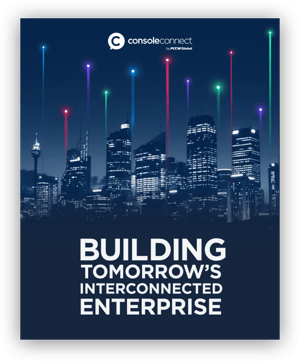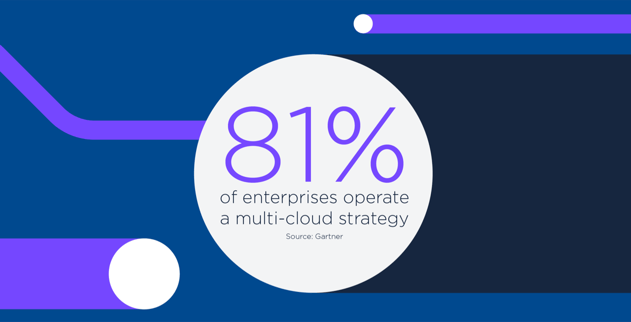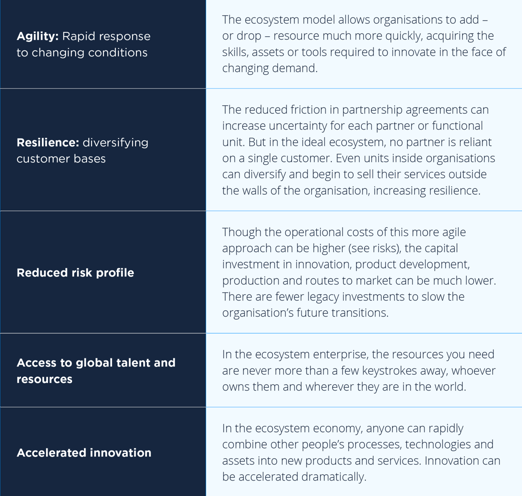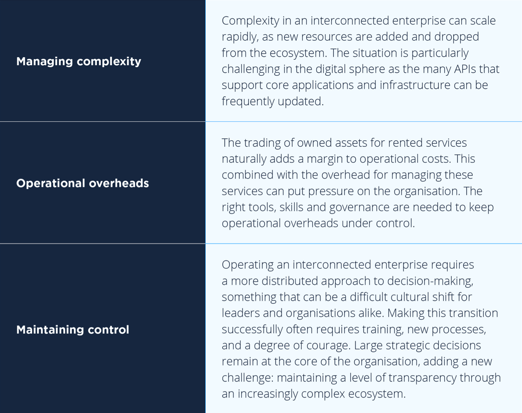
Enterprises are evolving into complex ecosystems, which involve new technologies, larger supply chains and more partners than ever before. To succeed in the future, businesses must learn to operate as a complex web of interactions rather than a monolithic whole.
To help you understand this trend, Console Connect and Applied Futurist Tom Cheesewright have created the framework for a new interconnected enterprise model. This can offer guidance for business leaders and IT decision makers as they shift their organisations to a platform for more sustainable success - helping them to accelerate change, reduce risk and maximise returns.

We live in an age of high frequency change, where information, ideas, and goods move faster around the world. With more of the value chain handed over to partners, and each human in the workforce increasingly augmented by technology, companies are transitioning from monoliths to ecosystems.
Organisations are shrinking, increasing revenue per head, and building agility and sustainable success through interconnectivity.
Technology has augmented every human in an organisation, making them more valuable.
Annual revenue per employee of some of the world’s most successful organisations today:

It is now simpler than ever before to build supply chains, partnerships and channels around the world, digitally.
The technology that powers every organisation increasingly resides in the cloud. Freed from the friction of physical infrastructure, companies can take advantage of new technologies faster than before.

In the post-pandemic landscape, the difference between freelance and employed workers has diminished, with growing parts of the workforce operating on a remote-first basis.

Your organisation is likely on the journey to being an interconnected enterprise already. Here are the five critical principles of the interconnected enterprise model that can help accelerate your transition.
Every component of the ecosystem needs to have a clearly defined function, with understood -inputs, outputs and interfaces.
The foundation of the interconnected enterprise is low friction interfaces. Where possible it leverages APIs and machine to machine communication to automate interactions.
The interconnected enterprise recognises the opportunities created by falling barriers to access the right technologies, skills and partners wherever they may be.
A traditional hierarchy does not work well in an ecosystem enterprise. Instead the organisation operates with distributed decision making where possible.
For critical strategic decisions, leaders at the core are fed with rich information, aided by the transparency of the organisation created by the low-friction interfaces.
The interconnected enterprise model is pertinent to most industries, but is accelerating most in six key sectors:
The software industry is a prime example of the shift to the interconnected enterprise. Monolithic applications have transformed into layers of interconnected applications and plugins, linked through APIs to deliver a tailored stack for each client.
The accessibility of digital production technologies and the rise of alternative distribution platforms have driven an explosion of complexity in the media landscape. The most successful organisations in this new landscape are the ones with the most far-reaching ecosystems that can leverage the right talent or the right distribution channel at the right time.
Games production, publishing and distribution is now an incredibly complex ecosystem. From the development tools and game engines, through to the production houses and many independents, to the rising number of distribution channels and platforms.
The finance ecosystem features many more players than a decade ago. The arrival of open banking, the boom in ‘fintech’ investment, and the serious challenge brought by digitalfirst alternative banks has rapidly disrupted what was quite a staid sector.
From homes to high value electronics, network models of manufacturing are becoming increasingly apparent with intellectual property, specialist production and assembly increasingly stratified into different businesses.
COVID-19 and the shift to hybrid working will catalyse the rise of automation in the professional services sector, with organisations forced to systematise processes that were previously handled by colleagues sat next to each other.

The interconnected enterprise model is a natural response to the high frequency change across industries. This new environment allows organisations to adapt more rapidly to changing conditions and opportunities. But like any model, it has its risks and challenges as well as its rewards.
Benefits of the interconnected enterprise model:

Risks of the interconnected enterprise model:

These are just some of the high-level findings in our new report ‘Building Tomorrow’s Interconnected Future’. In the full report, you can discover more about:
Create an account on Console Connect and get access to our interconnection pricing calculator.
REGISTER NOW
©2025 PCCW Global. All Rights Reserved.
Privacy statement
Terms of use
Cookie policy